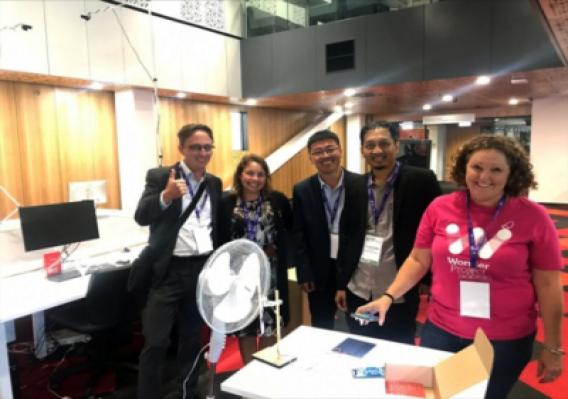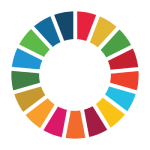Taking the Wonder Project Power Challenge with a Mini Wind Turbine in the New Zealand eGrid Workshop

Dr. phil. Ir. Didik Hariyanto, M.T., a lecturer in the Department of Electrical Engineering Education, Faculty of Engineering UNY, played an active role in the eGrid (electronic Grid) workshop held at the University of Auckland, New Zealand.
The eGrid Workshop is a forum for academics and practitioners in the electricity sector and related fields to exchange ideas, the latest information, and related experiences in their efforts to develop electricity from renewable energy sources. This workshop lasted for 4 days. "Activities in the eGrid workshop are in the form of presentations from academics and practitioners in the electricity sector in the form of keynotes, calls for papers, and posters," said Didik, Monday (9/1). Participants who participated in this activity came from various countries in the world, including from New Zealand, Australia, the United States, Germany, China, Indonesia and many more.
One of the exciting activity agendas in the workshop was the Wonder Project Power Challenge. The Wonder Project Power Challenge is a group activity to design a mini wind turbine to turn lights on. The challenge for the group was to turn on nine lights using the wind turbine design that was made. Didik Hariyanto and his group were the only ones who solved the challenge and turned on nine lights using the wind turbine design that was made. According to the lecturer in Electrical Engineering Education, Faculty of Engineering, UNY, each group was given components in the form of mini turbines, turbine support poles, cables, and used materials to make turbine blades. "In this mini project, each group was asked to be creative in making turbine blades from used goods and determine the ideal number of blades to produce the most electrical power," said Didik. Together with his group, Didik Hariyanto decided to use three turbine blades. The turbine blade material is taken from used plastic which is considered quite stiff. The design of the turbine blades is also made in such a way that it can catch the maximum wind. After making several design improvements to the turbine blades, Didik Hariyanto and his group solved the challenge. They turned on nine lights using the wind turbine design that was made.
This eGrid Workshop is sponsored by the IEEE Power Electronics Society (PELS) and the IEEE Power & Energy Society (PES). With the increasing application of power electronics in power grids, these two independent domains of power engineering are increasingly more closely integrated from a systems perspective than ever before. eGrid provides an international forum for academia and industry in the field of electronic networking to exchange information on the latest research ideas, advances, developments, experiences, achievements, advanced technological trends and applications. Previous eGrid workshops have been successfully held in Hefei, China (eT&D 2016), Aalborg Denmark (eT&D 2017), Charleston USA (eGrid 2018), Xiamen China (eGrid 2019), Aachen Germany (eGrid 2020), and USA (eGrid 2021). eGrid 2022-Auckland activities are themed panels, presentations and posters. All participants focus on latest issues on “Green Energy Technologies”, “Future workforce to support deeper renewable electrification”, “Innovation and start-ups to support end-to-end AC operations /DC Hybrid Grid”, “Technical challenges to address planning”, and “Operation and maintenance of Hybrid grids”. (Author : Didik, Editor : Dedy, Tj.Lak)






